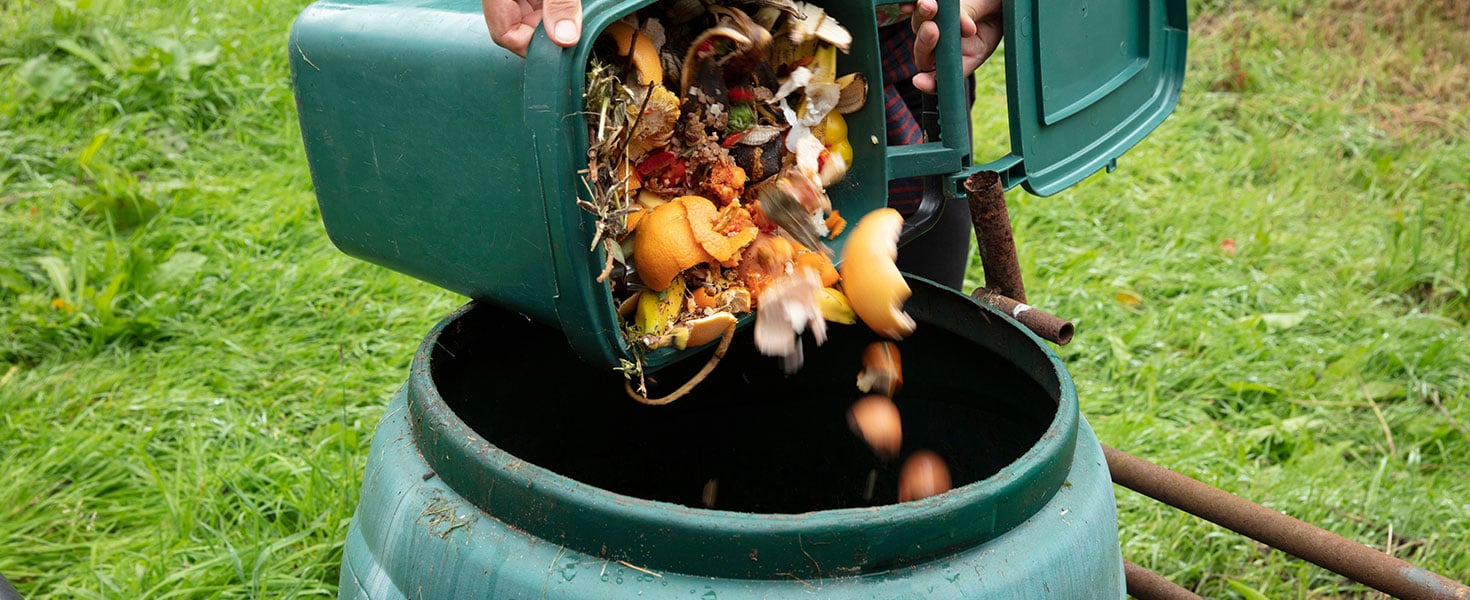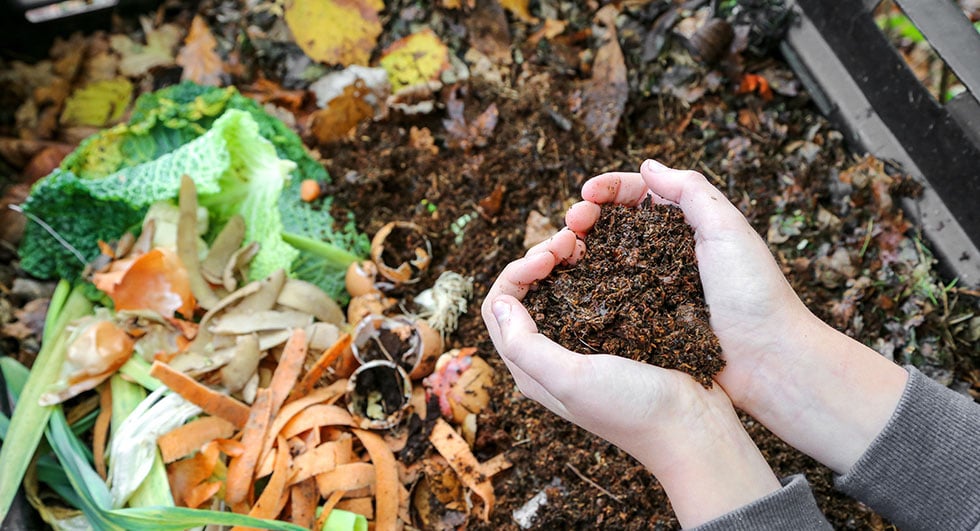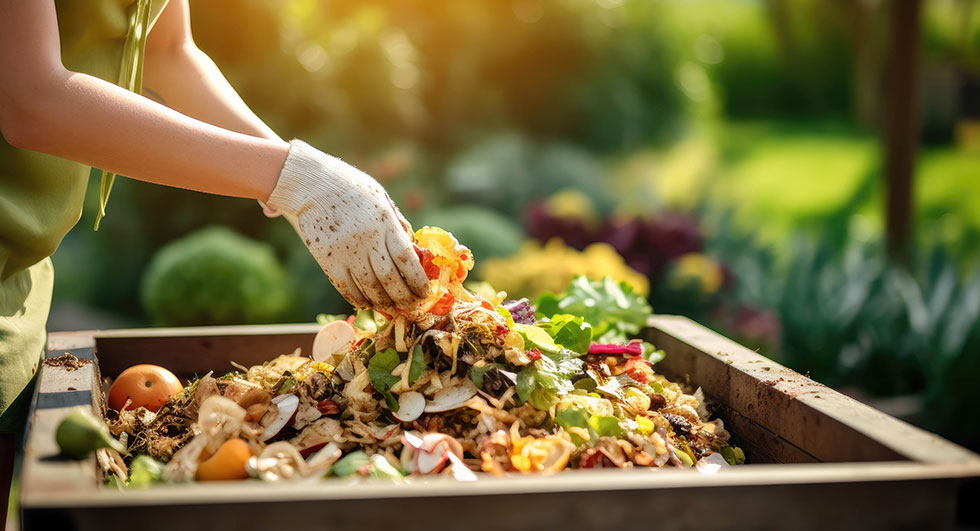

Did you know that the average American throws away 4.5 pounds of waste per day? In the U.S. alone, an estimated 28% of landfill waste could be composted, according to Indiana University’s Environmental Resilience Institute. Considering at-home composting? It’s easier than you think—it can be done in small spaces, reduces waste, and benefits your garden. We’ll define composting, go over what goes in the compost bin, composting styles, how to compost at home, and what to do with your black gold.

The magic of "black gold"
Composting is nature’s way of recycling. The process transforms organic waste (think yard clippings and food scraps) into nutrient-rich soil through natural decomposition. This happens when tiny organisms break down the waste.The key to successful composting lies in balancing the carbon-rich browns with nitrogen-rich greens. (See ingredient list below.) Both play a part in maintaining just the right environment for organisms to break down the materials.

What goes in the compost bun and what stays out?
Wondering what to add to your compost pile—and what to avoid? The Environmental Protection Agency suggests keeping this “ingredient list” in mind to maintain a good mix of nutrients and the right amount of moisture and oxygen.
Add in:
-
Browns: Carbon-rich materials include dried leaves, twigs, plants stalks, shredded paper/cardboard, and untreated wood chips.
- Greens: Nitrogen-rich materials include fruit and vegetable scraps, coffee grounds and paper filters, paper tea bags (without staples), grass clippings, and crushed eggshells.
- Water: Enough to keep the compost moist but not dripping wet.
Keep out
- Off-limits foods such as meat, fish, bones, dairy products, fats, oils, and grease—they can all attract animals
- Weeds
- Herbicide-treated plants and grass
- Diseased and pest-infested plants
- Painted or treated wood
- Pet waste and cat litter
- Glossy paper
Choose your compost style
You can choose how you’d like to compost, adjusting the method to fit your budget, space, and level of ease.
- A compost pile offers a budget-friendly approach for large areas. You’ll need to turn the compost occasionally with a shovel or pitchfork.
- A stationary compost bin offers a an affordable, less-messy option. Since space is limited, you might need to use a special tool designed for turning compost in bins.
- A compost tumbler, though more expensive, makes it easy to turn your compost. Just crank the handle to rotate the barrel. Plus, smaller models work great in tiny spaces.
A Step-by-step composting guide
- Choose the right location. An easy-to-access shady area with good drainage works best.
- Prepare your ingredients. Break or cut larger items (think twigs or corn cobs) into smaller pieces to help them decompose quicker.
- Layer your pile. Start with a brown layer (to absorb liquids), then add greens, and continue alternating layers. You should add more browns than greens, always topping off your food scraps with a thick layer of browns. The optimum carbon-to-nitrogen (brown to green) ratio is about 30:1, says the Environmental Resilience Institute.
- Add water. The EPA advises keeping your pile moist like “the consistency of a wrung-out sponge.”
- Turn and monitor. For healthy compost, you should provide adequate airflow and drainage. The airflow (which introduces oxygen and facilitates drainage) happens when you turn the compost. If the compost smells or looks too moist, add more browns. If the compost looks too dry, add a bit of water or more greens.
The compost payoff
Expect to “harvest” your finished compost in three to five months. It should smell earthy and look dark and crumbly, shrinking to about a third of its original size. Add this black gold to your garden beds to improve plant health, enhance your soil quality, and reduce your need to add chemical fertilizers or to water as frequently.
Ready to get started? Read through Backyard Composting from the University of Delaware’s Cooperative Extension, or reach out to your state extension office.

